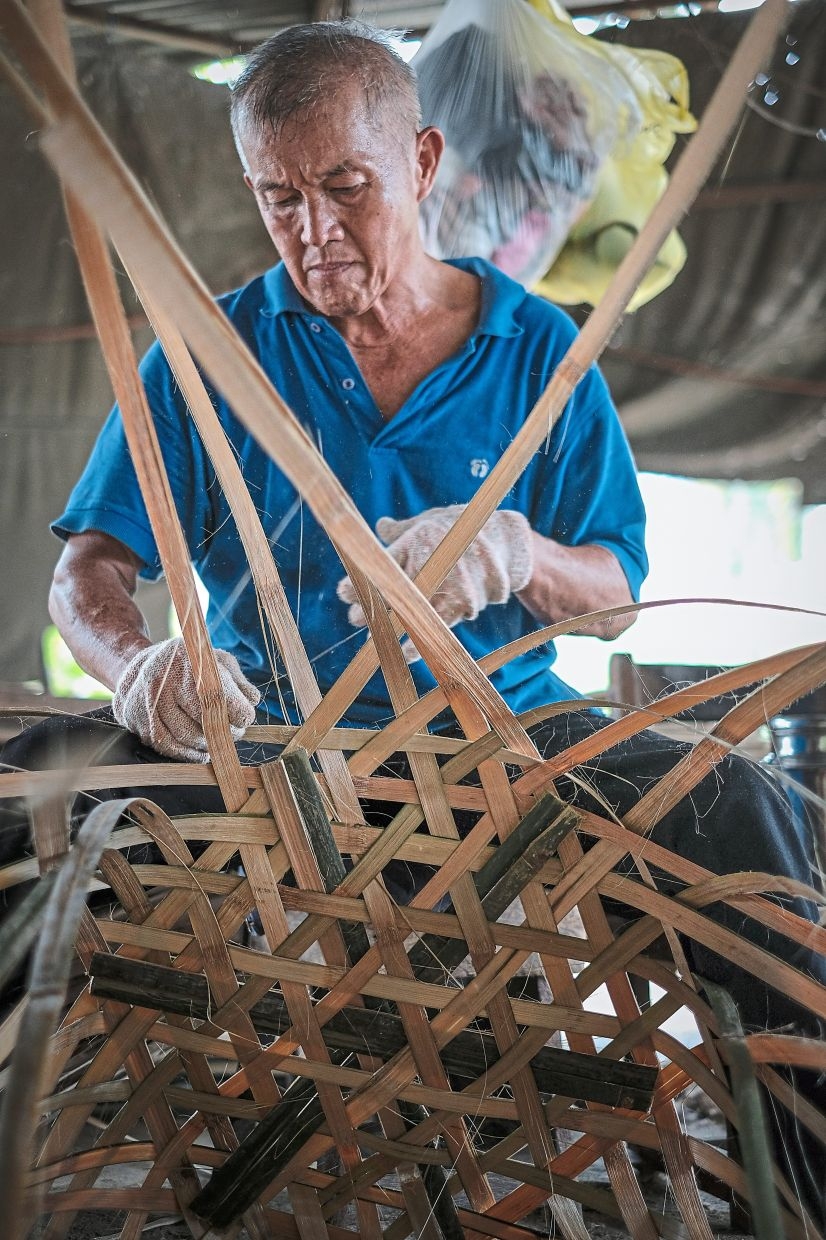MALAYSIA,S DYEING ART OF BAMBOO BASKET WEAVING.
×
Malaysia's Dying Art of Bamboo Basket Weaving.
(An artisan crafting a basket intended fom storing fish at a factory in Teluk Intan, Perak. — Photos: MAHIZZAN FADZIL)
Bamboo, contrary to popular belief, is a type of grass. Its versatility and resilience have made it a valuable material in various parts of the world.
IIt isn’t just seen as a mere plant in countries like Japan, especially in the Arashiyama Forest near Kyoto. Instead, bamboo is revered and deeply appreciated for its beauty and symbolism, representing strength, flexibility, and rapid growth.
In Malaysia, bamboo is abundant and holds economic and cultural significance.
One can source and harvest this sturdy grass in various locations, with Beruas in Perak standing out prominently.
A basket weaver crafts a large-sized basket intended for exporting vegetables to Singapore.
Bamboo is solid and can bear significant loads when observed naturally. This strength is attributed to its natural partitions, making it an excellent container material. And yet, the wonder of bamboo doesn’t stop there.
When segmented into smaller sections, it becomes flexible but retains its durability, making it an ideal raw material for baskets, mats, and furniture.
Different types of Bamboo basket waving test done by Star pics.
(It takes years for basket weavers to master and perfect the art of weaving bamboo baskets.)
Travel 50km south of Beruas to Telok Intan, and one will find a factory dedicated to making baskets from bamboo, primarily for transporting fish to market.
Serving the local fishing community, this factory produces a variety of basket sizes to meet diverse needs.
Further east, about 40km from Telok Intan, is Tapah, where another factory buzzes with activity.
This one is a hub for the farming community of Cameron Highlands, providing them with more profound and larger baskets designed to pack fruit produce and vegetables like cabbages.
These baskets then journey beyond the Malaysian borders, carrying fresh produce to neighbouring countries.
The art of crafting these baskets starts with a meticulous process.
Firstly, bamboo is split using a pressure jack that pushes it through a grid knife, dividing it into 10 parts.
These split sections are still too dense for weaving and undergo further refinement.
(A bamboo basket designed for holding fish is also used for steaming kembong to make steam salted kembong or kembong rebus.
A planing machine reduces their thickness to a 1.5-3mm manageable range.
Basket weavers, artisans of immense skill, then weave these prepared materials into baskets, each tailored for a specific purpose.
In Telok Intan, they craft shallower, smaller to medium-sized baskets, while in Tapah, the baskets are more significant, spanning 3-4ft in diameter, often accompanied by matching covers.
The contrast between this traditional craft and the modern world is starkly apparent.
Today, artificial or man-made materials dominate the market. These non-biodegradable products might offer convenience but come at an environmental cost.
As consumers become more informed and environmentally conscious, there’s a growing preference for natural products.
Still, the widespread presence of modern alternatives indicates a decline in traditional handicrafts.
For many, it’s rapidly becoming a vanishing art.The artisans who keep this craft alive pour dedication and passion into each basket they weave.
Yet, the future of this craft is uncertain.
(Bamboo is cut into smaller pieces before being segmented and thinned for basket-making.)
The younger generation, lured by the promise of urban living and modern jobs, often show little interest in continuing these traditional crafts.
There’s a looming possibility that such skills might be outsourced or taken over by foreigners.
The decline of basket weaving is one of many traditional crafts at risk in Perak. The state, rich in culture and history, offers glimpses into a rustic way of life that’s fast receding.
A road trip to explore these traditional hubs would be a worthwhile adventure for city slickers and cultural enthusiasts.
Witnessing the intricate process and dedication that goes into each piece educates us and stirs deep appreciation.
Such an expedition to closely examine how these basket weavers at work would remind Malaysians of our rich cultural heritage that is slowly disappearing.
Ref:-https://www.thestarcom.my








Comments
Post a Comment